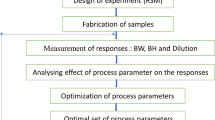Abstract
After a material undergoes hot stamping, post-processes are required to ensure that the final product has the expected quality. Typical post-processes are mechanical or laser trimming and piercing. These post-processes are expensive and time consuming because when the material undergoing hot stamping cools, its strength becomes very high. The purpose of this study was to develop a concurrent stamping–piercing trimless hot stamping process in which the hot stamping and hot piercing processes could be carried out in one operation for manufacturing automotive side sills. To achieve this purpose, first, a trimless blank was designed by carrying out an integrated numerical analysis including computational fluid dynamics and finite element analyses and employing an optimization technique. The process conditions for the hot piercing process were set based on the results of the finite element analysis of hot piercing process. Finally, the effectiveness of the developed hot stamping process was validated by performing a hot stamping experiment.
Similar content being viewed by others
References
H. Karabasian and A. E. Tekkaya, A review on hot stamping, Journal of Materials Processing Technology, 210 (2010) 2103–2118.
O. H. Kim, T. Altan and Q. G. Yan, Evaluation of strmping lubricants in forming advanced high strength steels (AHSS) using deep drawing and ironing tests, Journal of Materials Processing Technology, 209 (2009) 4122–4133.
W. Ha, C. H. Lee and C. J. Park, Microstructural control of hot rolled strips and their tensile strengths after hot stamping process, Journal of Mechanical Science and Technology, 29 (1) (2015) 209–213.
T. Senuma, Physical metallurgy of modern high strength steel sheets, ISIJ Int., 41 (2001) 520–532.
T. B. Hilditch, J. G. Speer and D. K. Matlock, Influence of low-strain deformation characteristics of high strength sheet steel on curl and springback in bend-under-tension tests, Journal of Materials Processing Technology, 182 (1-3) (2007) 84–94.
R. Kolleck, R. Veit, M. Merklein, J. Lechler and M. Geiger, Investigation on induction heating for hot stamping of boron alloyed steels, CIRP Annals–Manufacturing Technology, 58 (1) (2010) 275–278.
M. F. Li, T. S. Chiang, J. H. Tseng and C. N. Tsai, Hot stamping of door impact beam, Procedia Engineering, 81 (2014) 1786–1791.
Y. Chang, X. D. Li, K. M. Zhao, C. Y. Wang, G. J. Zheng, P. Hu and H. Dong, Influence of stress on martensite transformation and mechanical properties of hot stamping AHSS parts, Materials Science and Engineering A, 629 (2015) 1–7.
M. D. Huang, B. Wang, J. Zhou and X. Li, Investigation on mechanical properties distribution on hot stamped part, Procedia Engineering, 81 (2014) 1774–1779.
Y. Chang, S. Li, X. Li, C. Whang, P. Hu and K. Zhao, Effect of contact pressure on IHTC and the formability of hotformed 22MnB5 automotive parts, Applied Thermal Engineering, 99 (2016) 419–428.
X. Han, K. Yang, Y. Ding, S. Tan and J. Chen, Numerical and experimental investigations on mechanical trimming process for hot stamped ultra-high strength parts, Journal of Materials Processing Technology, 234 (2007) 158–168.
H. So, D. Fabmann, H. Hoffman, R. Golle and M. Schaper, An investigation of the blanking process of the quenchable boron alloyed steel 22MnB5 before and after hot stamping process, Journal of Materials Processing Technology, 212 (2) (2012) 437–449.
R. Kolleck, J. Aspacher and R. Veit, Efficiency of hot forming process, Proc. of 2nd International Conference on Hot Sheet Metal Forming of High-performance Steel, Lulea, Sweden (2009) 173–179.
Z. Q. Zhang, X. F. Jia and Y. J. Wang, Optimization analysis of initial sheet metal contour line for high-strength boron steel in hot stamping, Strength of Materials, 48 (1) (2016) 77–81.
C. Yang, P. Li and L. Fan, Blank shape design for sheet metal forming based on geometrical resemblance, Procedia Engineering, 81 (2014) 1487–1492.
D. C. Ko, S. H. Cha, S. K. Lee, C. J. Lee and B. M. Kim, Application of a feasible formability diagram for the effective design in stamping processes of automotive panels, Materials & Design, 31 (3) (2010) 1262–1275.
H. S. Choi, B. M. Kim, C. G. Kang, S. Y. Ha and D. H. Lee, Optimization of blank shape for hot stamping of center pillar, Annual Conference of KSAE, Inchon, Korea (2009) 2439–2445.
H. S. Choi, B. M. Kim, D. H. Kim and D. C. Ko, Application of mechanical trimming to hot stamping 22MnB5 parts for energy saving, International Journal of Precision Engineering and Manufacturing, 15 (6) (2014) 1087–1093.
K. Mori, S. Saito and S. Maki, Warm and hot punching of ultra high strength steel sheet, CIRP Annals–Manufacturing Technology, 57 (2008) 321–324.
Author information
Authors and Affiliations
Corresponding author
Additional information
Recommended by Associate Editor Dae Cheol Ko
In-Kyu Lee received his B.S. degree (2010) in Department of Mechanical and Automotive Engineering from International University of Korea in 2010, and his M.S. degree (2012) in National Core Research Center for Hybrid Materials Solution from Pusan National University in Korea. He is currently a Researcher at the Ultimate Manufacturing Technology Group at Korea Institute of Industrial Technology (KITECH), and Ph.D. candidate of Department of Mechanical Engineering at Pusan National University in Korea. His research interests include cold/hot forging, die design technology.
Byung-Min Kim received his B.S. (1979), M.S. (1984) and Ph.D. (1987) degrees from Pusan National University, Korea, in 1979, 1984 and 1987, respectively. Dr. Kim is currently a Professor at the School of Mechanical Engineering, Pusan National University in Busan, Korea. His major research field is production and manufacturing based on metal forming.
Sang-Kon Lee received his B.S. (1998), M.S. (1998), and Ph.D. (2008) from Pusan National University in Korea. Dr. Lee is currently the Chief Officer/Principal Researcher at the Ultimate Manufacturing Technology Group at Korea Institute of Industrial Technology (KITECH) in Korea. His major research fields are metal forming technologies including wire and shape drawing, aluminum/magnesium extrusion, and cold/hot forging process.
Rights and permissions
About this article
Cite this article
Lee, IK., Lee, SY., Kim, BM. et al. Development of concurrent stamping-piercing trimless hot stamping process. J Mech Sci Technol 31, 1885–1891 (2017). https://doi.org/10.1007/s12206-017-0336-5
Received:
Revised:
Accepted:
Published:
Issue Date:
DOI: https://doi.org/10.1007/s12206-017-0336-5




